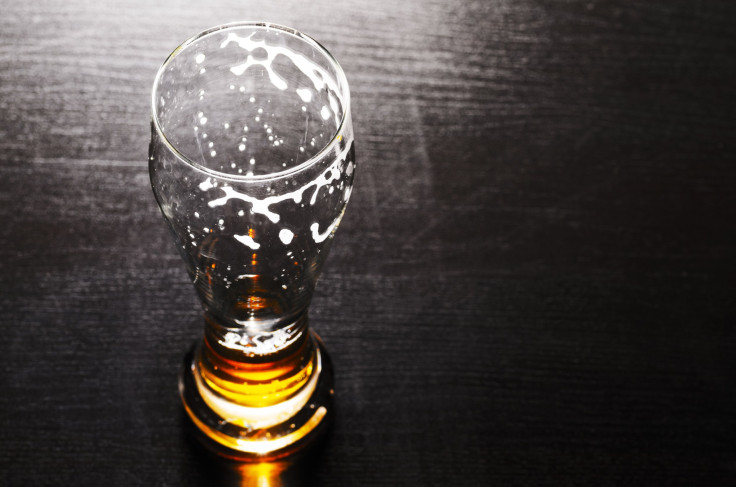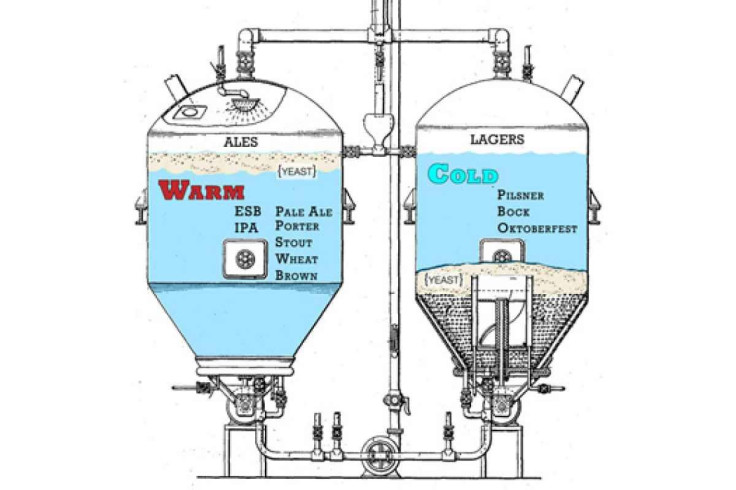Genome Project Sequences Lager Beer, Solving The Mystery Of Beer's Origin

Have you ever grabbed a beer with a friend, taken a sip and wondered, “I wonder how genetically different my lager is from his ale?” Most people don’t, but in order to unlock the mysteries of beers’ beginnings, a group of scientists decided to sequence its yeast genes.
Beers rely on a balancing act between different yeasts, hops, malts, and a careful calibration of temperatures to give them just the right taste. Lagers represent 94 percent of the world beer market, but in 2011, scientists were surprised to discover that the most popular type of beer was made out of two different yeast species, but they couldn’t figure out why. To solve the puzzle, researchers from the University of Wisconsin-Madison decided to take a closer look (the closest) and sequenced the beer's genome.
Beer Basics
When it comes to beer, the first thing to understand is that there are two basic categories: lagers and ales. It doesn’t have anything to do with alcohol content or bitterness, but instead comes down to three main differences in the brewing process. Ales are made with top-fermenting strains of yeast, which means the yeast actually ferments at the top of the tank it’s made in. At the top, the yeast produces chemicals called esters, which affects the beer’s flavor depending on what specific yeast is used.
Ale yeast ferments best in warmer temperatures, while lagers ferment at colder temperatures. Historically, lager beers come from countries like Germany, where cold temperatures give the beer its characteristic mild and crisp taste.
Lagers use bottom-fermenting yeast, which sink to the bottom of the tank. Because it doesn’t produce esters, it lacks in the way of flavor, which is why other ingredients like malt and hops are added. There are rare recipe exceptions to how brewers make each type, but the bottom to top yeasts are the main diverging processes.

Sequencing Your Happy Hour's Genome
For thousands of years, ale, wine, and bread has been made from Saccharomyces cerevisiae yeast. But it wasn’t until when beer was stored in German caves during long winters that a lighter and smoother beer was created, known as lager. In 1904, Danish beer scientist Emil Christian Hansen was the first to discover, describe, and name lager’s yeast as S. pastorianus. Four years later he discovered another strain, which he realized split from the same kind of yeast genome. These younger beers quickly dominated (think of Budweiser, Sapporo, and Heineken).
When researchers compared six yeast genomes they collected from around the world and realized the ale was an entirely new species they named S. eubayanus, it changed human understanding of beer yeast. The strain of lager's particular yeast strain was found to have originated in Argentinia, not Germany. It revealed lager's S. pastorianus teast was a hybrid “child” created by “parents” S. cerevisiae and S. eubayanus.
Since researchers at Wisconsin-Madison now had the parents, they were able to look at the entire genomic sequence for the first time and found one type of lager is born from S. cerevisiae and another type of lager is born from S. eubayanus. Now that they figured out lager had two origins independent from each other, it demonstrated lager yeasts’ surprising evolutionary path.
"Lager yeasts did not just originate once," said the study’s co-author Chris Todd Hittinger, a professor at the University of Wisconsin-Madison, in a press release. "This unlikely marriage between two species, genetically as different from one another as humans and birds, happened at least twice."
Source: Baker EC and Hittinger CT. Molecular Biology and Evolution. 2015.



























